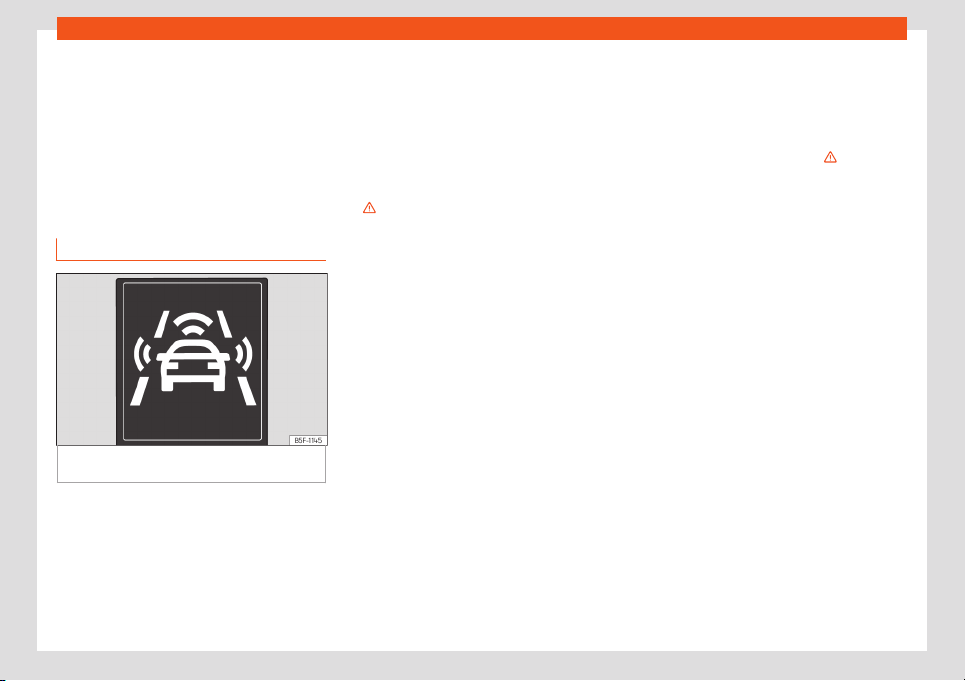Loading ...
Loading ...
Loading ...

Driving
Not possible to start regulation
●
The selected driving profile does not allow
r
egulation to start. Select another profile and
repeat the procedure.
Emergency brake assistance
system (Front Assist)
Introduction
Fig. 150 On the instrument panel display: ad-
v
ance warning indications.
The objective of the system is to prevent
head-on collisions against ob
jects that may
be in the vehicle’s path or minimise the con-
sequences of such impacts.
Depending on several factors and how criti-
cal the situation is, the system operates in a
staggered manner. First it warns the driver,
and if the driver’s reaction does not occur or
is insufficient, it activates independent emer-
gency braking.
The function is intended to prevent collisions
with parked vehicles or vehicles in the same
lane travelling in the same direction, or with
pedestrians crossing the vehicle’s path or
travelling in the same lane and direction. It
may not activate in other hazard situations
›››
.
Fr
ont Assist is active between 4 km/h
(2.5 mph) and 250 km/h (156 mph). Depend-
ing on a range of conditions, some of the
functions described below are omitted to op-
timize the behaviour of the system.
Front Assist is a driving assistance function
that can never replace the driver’s atten-
tion.
Safety distance warning
If the system detects that you are driving too
close to the vehicle in front, it will warn the
driver with this indication on the instrument
panel display .
The timing of the warning varies according to
other factors: driver behaviour and speed.
Advance warning
If the system detects a possible collision with
the vehicle in front, it alerts the driver by
means of an audible warning and an indica-
tion on the instrument panel display
›››
Fig. 150.
The warning moment varies depending on
the traffic situation and driver behaviour. At
the same time, the vehicle will prepare for a
possible emergency braking
›››
.
Critical w
arning
If the driver fails to react to the advance
warning, the system may actively intervene
in the brakes and generate a brief jolt to warn
the driver of the imminent danger of a colli-
sion.
Automatic braking
If the driver also fails to react to the critical
warning, the system may initiate independ-
ent emergency braking by progressively in-
creasing the braking in accordance with how
critical the situation is.
Driver emergency brake assistance sys-
tem
The system may detect that the driver is not
braking hard enough to avoid the collision. In
this case, it will increase the braking intensity.
The system cannot prevent a collision, al-
though it can significantly minimise the con-
sequences by reducing the speed and the
force of the impact.
218
Loading ...
Loading ...
Loading ...